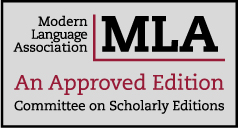Why the First Series?
The Catholic Homilies were composed in the period 989 to 994 and issued in two series dedicated to Sigeric, Archbishop of Canterbury; in them, Ælfric sought to meet the national need for education by providing clergy with orthodox preaching material in the vernacular. The scope of his aim was extraordinary: to convey the whole of Church doctrine, from creation to judgment, in a way faithful to his patristic sources and understandable to his unlearned audience. The First Series of Catholic Homilies inaugurated and formed a central part of this lifetime ambition, and its influence may be judged by the geographic breadth and number of copies extant (thirty-five compared to the unique copy of Beowulf). Indeed, Ælfric’s works continued to be copied for two centuries following his death, despite the subordination of Old English following the Norman Conquest of 1066. Recent scholarship on the First Series, moreover, has increased dramatically, focusing on such subjects as Ælfric’s audience, use of hagiography, attitude toward apocrypha, construction of an authorial persona, and teaching on penance, kingship, and divine foreknowledge.
Work on the First Series was singularly assisted by the release in 1997 of Peter Clemoes’ long-awaited edition of the First Series, comprising a revision of his 1956 Cambridge doctoral dissertation and published posthumously by Professor Malcolm Godden of Oxford University. For his base text, Clemoes drew on London, British Museum, Royal 7 C. xii [Ker §257], with passages supplied from Cambridge, University Library, Gg. 3. 28 [Ker §15]—the source for the previous, nineteenth-century edition by Benjamin Thorpe—and variants collated from some thirty-three other manuscripts.
As a printed edition, Clemoes’ work is an admirable piece of scholarship. Royal 7 C. xii, moreover, being probably the earliest extant manuscript and containing alterations in Ælfric’s own hand, is a logical copy on which to base such an edition. In his discussion of the development and dissemination of the First Series, however, Clemoes traces six phases during which Ælfric revised, supplemented, and reorganized his work.1 As Andy Orchard has argued regarding the homilies of Ælfric’s contemporary, Wulfstan of Worcester, such adaptation of material results not in a single, “authoritative” text with variants, but in a series of interrelated texts designed for different audiences at different points in the author’s career. Despite Clemoes’ conscientious efforts to describe this creative progression and to reproduce divergent readings in appendices and scholarly apparati, by nature a static, printed edition is hard put to capture such a fluid compositional process. Digital media, by contrast, employing dynamic links and customizable windows, may better enable scholars to identify changes (authorial or otherwise) to this material and to explore the significance of such changes.
- ↑For Ælfric’s later collections of homilies for the Temporale (referred to by Clemoes as TH I and II), which integrate material from CH I and II with homilies for Sundays not covered by the Sermones, see Clemoes (“Chronology” 42-7 and 56-7) and Godden (Homilies lxiv, lxxv, and lxxxvi-xc).
- ↑Old English Prose: Basic Readings. Ed. Paul E. Szarmach. London: Garland, 2000. 29-72. Rpt. from The Anglo-Saxons: Studies in Aspects of their History and Culture presented to Bruce Dickins. Ed. Peter Clemoes. London: Bowes & Bowes, 1959. 212-47.
- ↑Clemoes, ed. Ælfric’s Catholic Homilies: The First Series, Text. Early English Text Society ss 17. Oxford: Oxford UP, 1997.
- ↑Godden, ed. Ælfric’s Catholic Homilies: The Second Series, Text. Early English Text Society ss 5. London: Oxford UP, 1979.
 Introduction
Introduction Image Library
Image Library